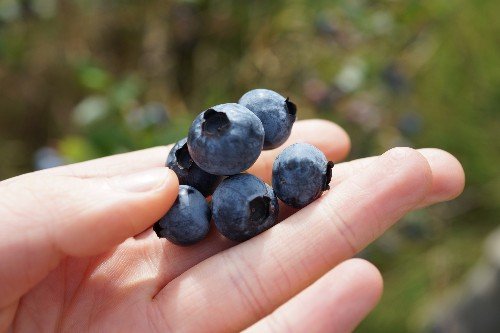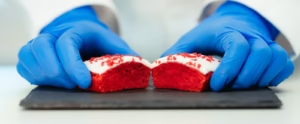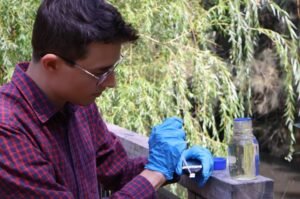Friday, 16 January 2026
Research uncovers reason behind blue colour of blueberries
The chromatic blue-UV reflectance arises from the interaction of the randomly arranged crystal structures of the epicuticular wax with light Tiny external structures in the wax coating of blueberries give…

The chromatic blue-UV reflectance arises from the interaction of the randomly arranged crystal structures of the epicuticular wax with light
Tiny external structures in the wax coating of blueberries give them their blue colour, researchers at the University of Bristol can reveal.
This applies to lots of fruits that are the same colour including damsons, sloes and juniper berries.
In the study, published in Science Advances, researchers show why blueberries are blue despite the dark red colour of the pigments in the fruit skin. Their blue colour is instead provided by a layer of wax that surrounds the fruit which is made up of miniature structures that scatter blue and UV light. This gives blueberries their blue appearance to humans and blue UV to birds. The chromatic blue-UV reflectance arises from the interaction of the randomly arranged crystal structures of the epicuticular wax with light.
Rox Middleton, Research Fellow at Bristol’s School of Biological Sciences, explained, “The blue of blueberries can’t be ‘extracted’ by squishing – because it isn’t located in the pigmented juice that can be squeezed from the fruit. That was why we knew that there must be something strange about the colour.
“So we removed the wax and re-crystallised it on the card and in doing so we were able to create a brand new blue-UV coating.”
The ultra-thin colourant is around two microns thick, and although less reflective, it’s visibly blue and reflects UV well, possibly paving the way for new colourant methods.
“It shows that nature has evolved to use a really neat trick, an ultrathin layer for an important colourant,” added Rox.
Most plants are coated in a thin layer of wax which has multiple functions, many of which scientists still don’t understand. They know that it can be very effective as a hydrophobic, self-cleaning coating. However, until now, researchers did not know how important the structure was for visible colouration.
Now the team plans to look at easier ways of recreating the coating and applying it. This could lead to a more sustainable, biocompatible and even edible UV and blue-reflective paint.
Furthermore, these coatings could have the same multiple functions as natural biological ones that protect plants.
Technology
Bringing PFAS testing to the point of need
Jan 16, 2026 | Australia
Study finds Magtein enhances memory, reaction time and heart health markers
Jan 15, 2026 | Company News
Walmart and Google turn AI discovery into effortless shopping experiences
Jan 15, 2026 | Company News
Food Testing
Bringing PFAS testing to the point of need
Jan 16, 2026 | Australia
IMCD opens a Food & Nutrition Laboratory in Cologne
Jan 08, 2026 | Company News
La Trobe University Develops Portable Biosensor to Detect PFAS in Water
Jan 08, 2026 | Australia
More Popular
Amar Pure Gold to invest Rs 250 Cr in Agro-Food Park in Himachal Pradesh
Jan 16, 2026 | Company News
Franke launches new A Line in Southeast Asia and opens regional flagship showroom in Singapore
Jan 16, 2026 | Beverages
EXBERRY plant-based colour supplier GNT earns top sustainability award
Jan 16, 2026 | Awards





